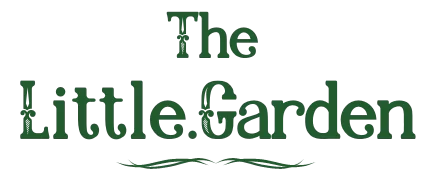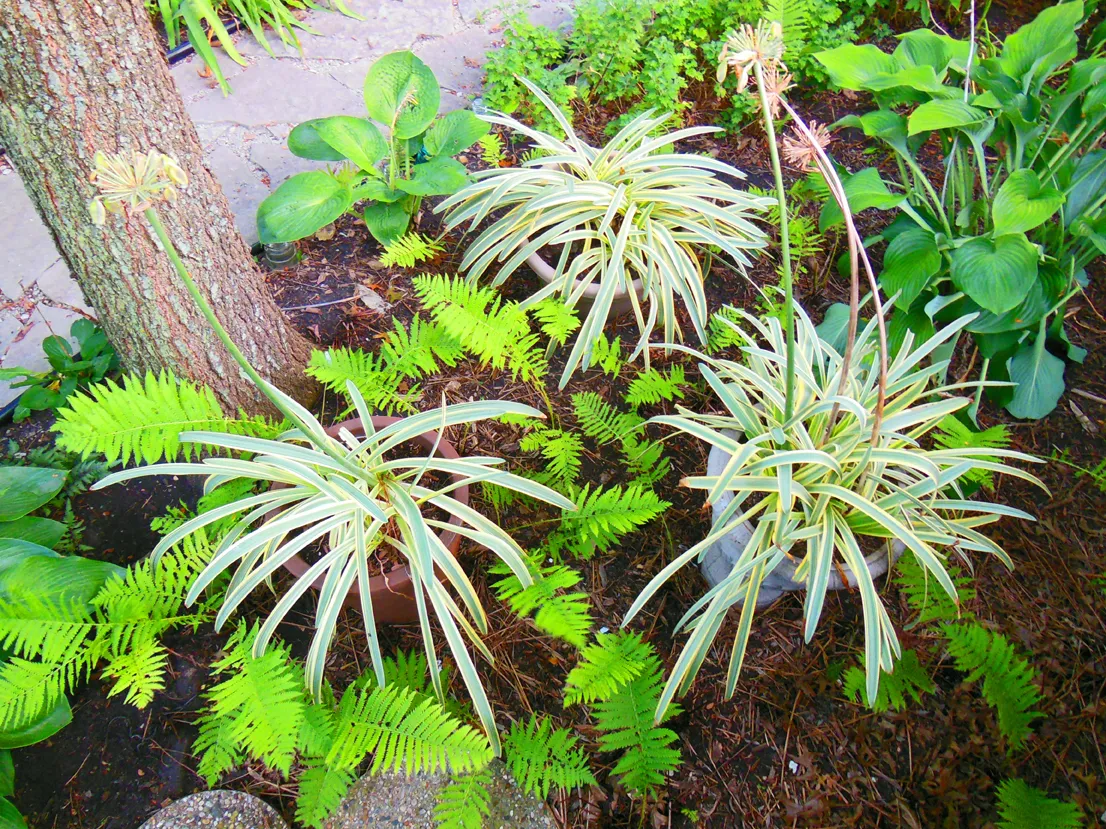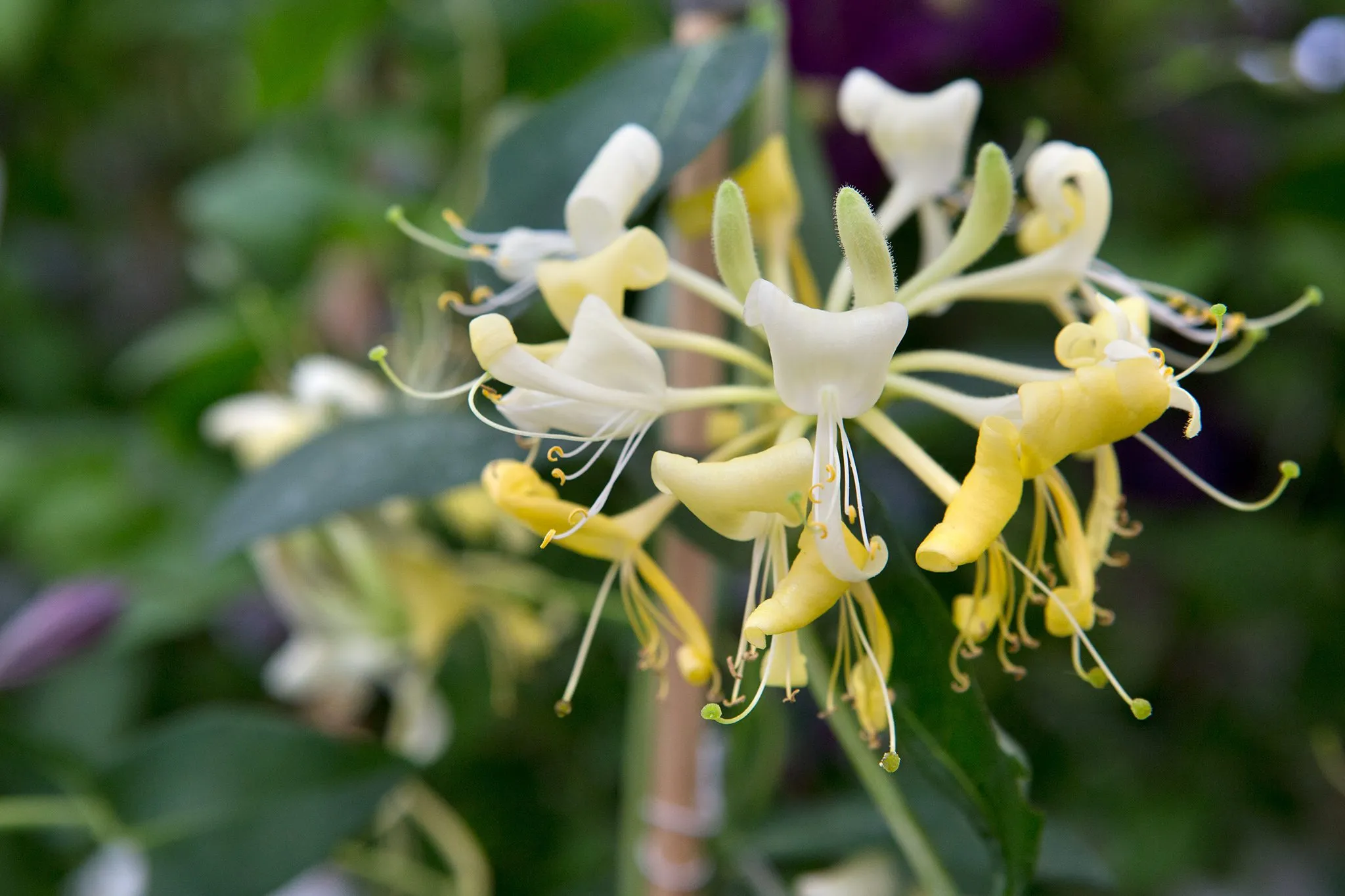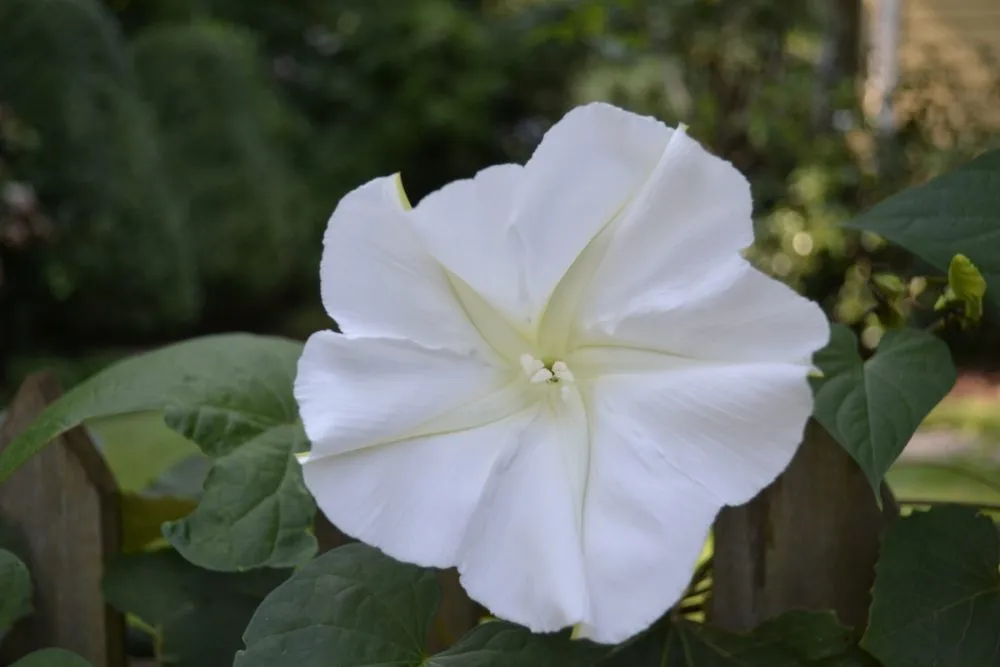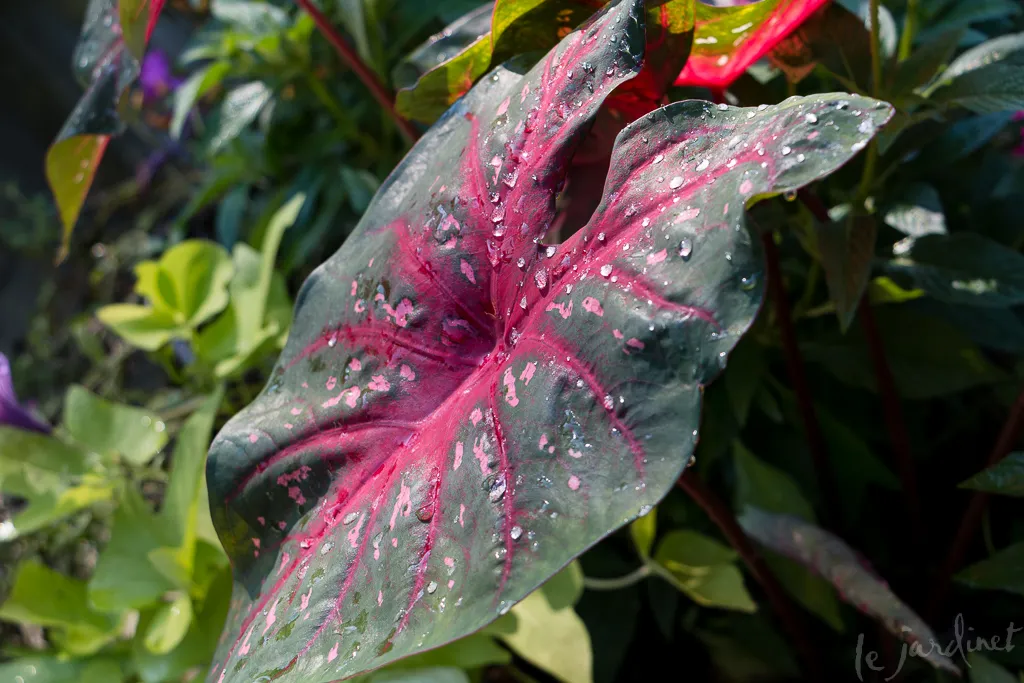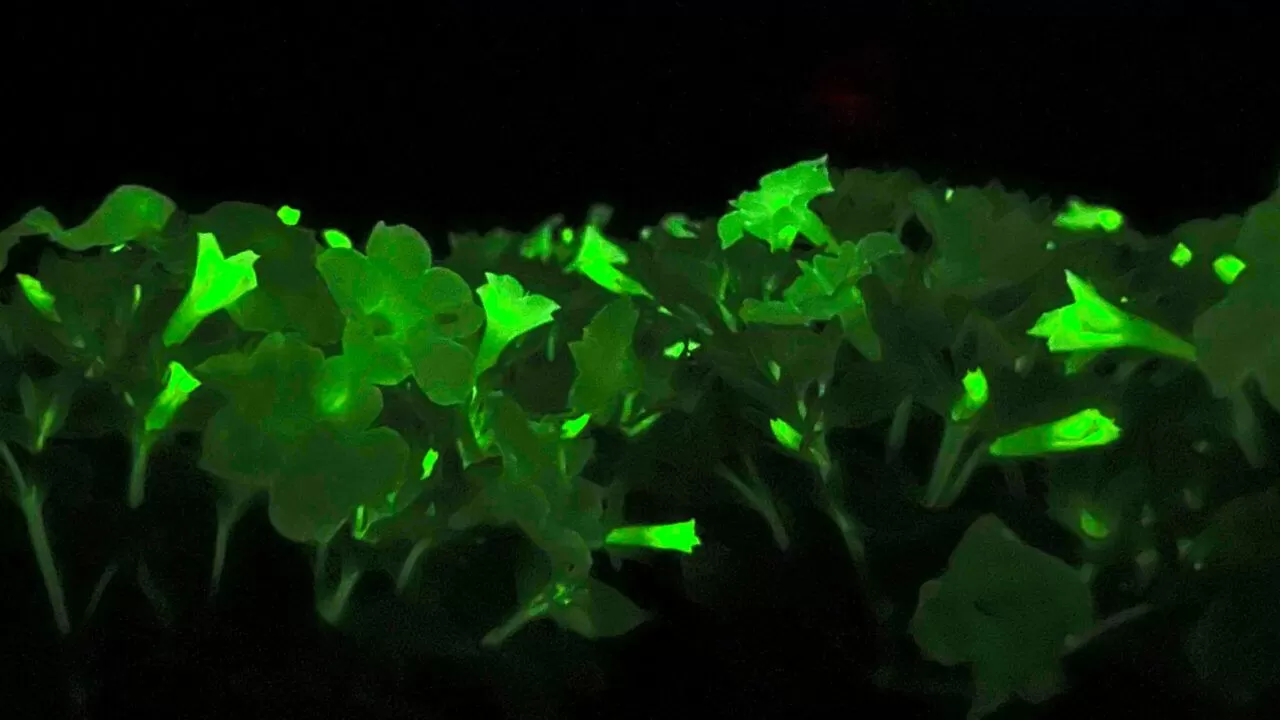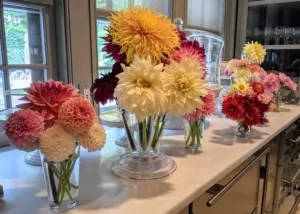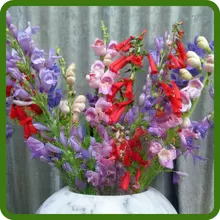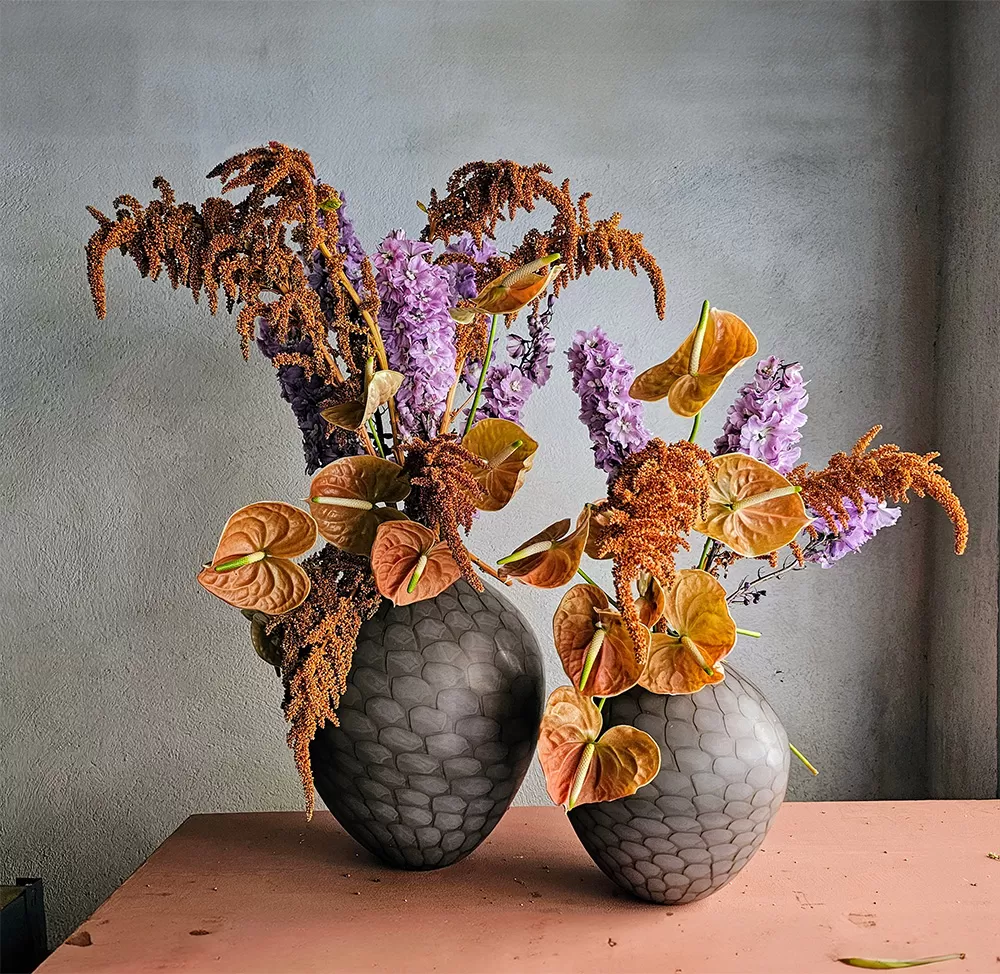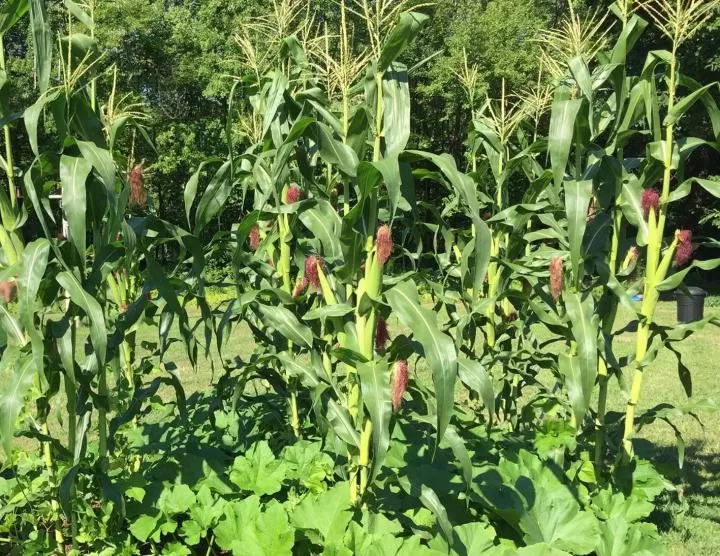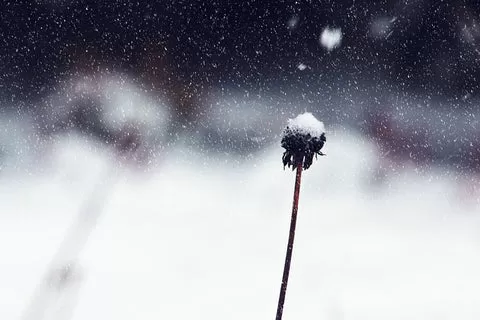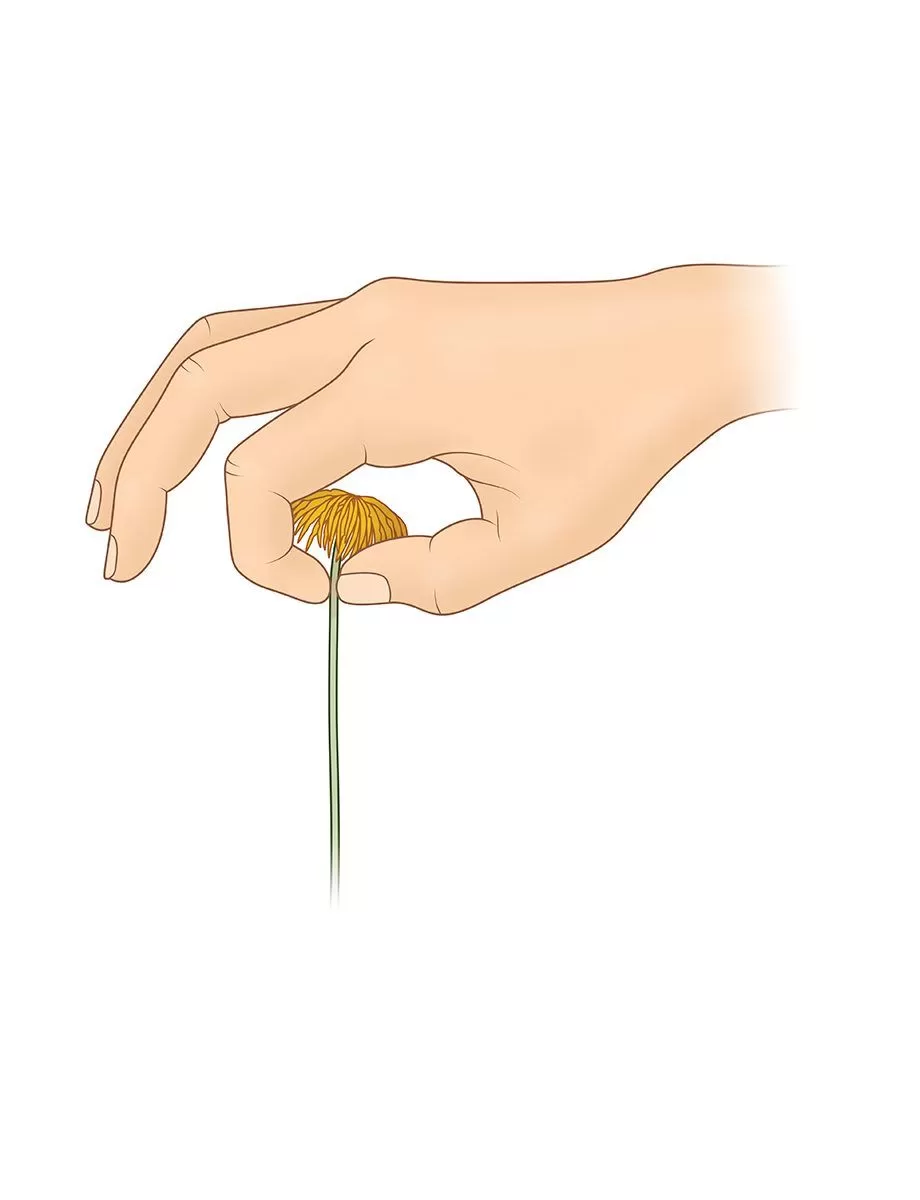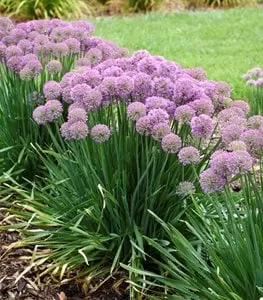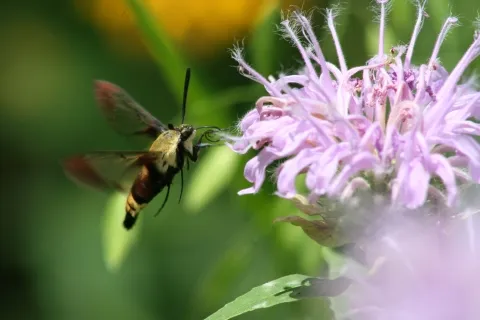- Edible flowers add stunning visual appeal and unique flavors to cocktails.
- Safety first: Always identify flowers correctly and source them safely (organically grown for consumption).
- Many common garden flowers and herb blossoms can be used.
- Growing your own edible blooms for cocktail garnishes is rewarding and ensures quality.
- Discover popular varieties and how to use them to create beautiful, garden-inspired drinks.
Imagine sipping a perfectly crafted cocktail, its flavors singing on your palate, and then your eye catches a delicate bloom resting on the rim or floating just below the surface. That isn’t just decoration; it could be an edible bloom for cocktail garnishes, adding a surprising hint of flavor, aroma, or simply breathtaking beauty. At The Little Garden, we believe the joy of gardening extends beyond the soil and into every corner of our lives, including our drinks. Summer’s bounty offers an incredible palette of colors and tastes right from our own backyards, perfect for transforming simple drinks into garden-fresh masterpieces. Let’s explore some delightful edible flowers that can take your cocktail game to the next level, straight from your little patch of green!
 cocktail-lovers-guide-to-edible-flowers-5886989
cocktail-lovers-guide-to-edible-flowers-5886989
Contents
- Safety First: Important Considerations Before Using Edible Flowers
- Popular Edible Blooms for Cocktail Garnishes and Their Flavors
- Allium Flowers (Chives, Leeks, Onion)
- Aster, New England
- Bee Balm
- Bluets
- Borage
- Calendula
- Carnation
- Chamomile
- Chrysanthemum
- Columbine
- Cornflower
- Cosmos
- Dahlia
- Dandelion
- Daylily
- Dianthus
- Evening Primrose
- Fleabane
- Forsythia
- Fruit Blossoms
- Fuchsia
- Geranium
- Goldenrod
- Hawkweed
- Herb Blossoms
- Hibiscus
- Hosta
- Kousa Dogwood
- Lavender
- Lilac
- Magnolia
- Nasturtium
- Orchid
- Pansies & Violas
- Peony
- Phlox
- Queen Anne’s Lace
- Red Clover
- Rose
- Sunflower
- Squash Blossoms
- Tulip
- Violet
- Wisteria
- Wood Sorrel
- Yarrow
- Sourcing and Preparing Your Edible Blooms
- Creative Ways to Use Edible Flowers in Cocktails
Safety First: Important Considerations Before Using Edible Flowers
Before you start snipping blooms for your next happy hour, it is absolutely crucial to prioritize safety. Not all flowers are edible, and some can be toxic.
- Positive Identification is Key: Never consume a flower unless you are 100% certain of its identification. If in doubt, leave it out. Consult reliable guides or experienced foragers.
- Source Matters: Flowers from florists, garden centers, or conventional grocery stores are often treated with pesticides and other chemicals not safe for consumption. Only use flowers specifically grown and labeled as edible, or those you have grown yourself organically, free from pesticides and herbicides.
- Avoid Roadside or Wild Flowers: Flowers growing near roads or in public spaces may be exposed to pollutants, pesticides, or pet waste.
- Introduce Gradually: If you are new to edible flowers, try a small amount first to ensure you don’t have an allergic reaction.
- Know What to Avoid: Common ornamental plants that are NOT safe to eat include rhododendron, azalea, daffodil, hydrangea, ranunculus, lily of the valley, foxglove, and oleander. True lilies (Lilium species) are also not edible.
Popular Edible Blooms for Cocktail Garnishes and Their Flavors
Here’s a list of some fantastic edible blooms for cocktail garnishes, many of which you might already have in your garden or can easily grow. Each adds its own unique touch!
Allium Flowers (Chives, Leeks, Onion)
- Scientific Name: Allium species
- Common Name: Allium, Chive flowers, Onion flowers
- Zone: Varies by species
- Light: Full sun
- Humidity: Moderate
- Water: Moderate
- Flavor & Use: Delicate, starry blossoms with a mild onion or garlic flavor. Wonderful when you want to add a savory note to cocktails, especially those featuring gin, vodka, or even tequila. Sprinkle individual florets over the drink.
Aster, New England
- Scientific Name: Symphyotrichum novae angliae
- Common Name: New England Aster
- Zone: 4-8
- Light: Full sun
- Humidity: Moderate
- Water: Moderate
- Flavor & Use: Both leaves and flowers are edible. A lovely native option for late-season garden cocktail garnishes.
Bee Balm
- Scientific Name: Monarda didyma
- Common Name: Bee Balm, Bergamot
- Zone: 4-9
- Light: Full sun to partial shade
- Humidity: Moderate
- Water: Moderate
- Flavor & Use: Vibrant, spiky blossoms with a flavor reminiscent of mint and citrus (like bergamot). Use petals or whole flowers. Pairs beautifully with gin or citrus-based drinks.
Bluets
- Scientific Name: Houstonia caerulea
- Common Name: Bluets, Quaker Ladies
- Zone: 3-8
- Light: Partial shade
- Humidity: Moderate
- Water: Moist soil
- Flavor & Use: Tiny blue to white flowers with a very mild, slightly vegetal flavor. Best used for their delicate appearance, floating on light-colored cocktails.
Borage
- Scientific Name: Borago officinalis
- Common Name: Borage, Starflower
- Zone: Annual (often reseeds)
- Light: Full sun
- Humidity: Low to moderate
- Water: Moderate
- Flavor & Use: Striking blue, star-shaped flowers with a refreshing cucumber flavor. A classic and popular cocktail garnish, especially lovely in gin and tonics or cucumber-infused drinks.
 a clear drink in a rocks glass with a cucumber slice and blue borage flowers.
a clear drink in a rocks glass with a cucumber slice and blue borage flowers.
Calendula
- Scientific Name: Calendula officinalis
- Common Name: Calendula, Pot Marigold
- Zone: Annual (often reseeds)
- Light: Full sun
- Humidity: Low to moderate
- Water: Moderate
- Flavor & Use: Sunny orange and yellow petals with a slightly peppery or tangy flavor, sometimes compared to saffron. Use petals to add color and a hint of spice.
Carnation
- Scientific Name: Dianthus caryophyllus
- Common Name: Carnation, Clove Pink
- Zone: Varies by variety (often treated as annuals)
- Light: Full sun
- Humidity: Low to moderate
- Water: Moderate
- Flavor & Use: Species of Dianthus with petals ranging from sweet to spicy. Essential in the historical Chartreuse liqueur recipe. Remember to cut off the bitter white base of the petals before using. Adds a unique spicy-sweet note.
Chamomile
- Scientific Name: Matricaria recutita
- Common Name: Chamomile, German Chamomile
- Zone: Annual (often reseeds)
- Light: Full sun
- Humidity: Low to moderate
- Water: Moderate
- Flavor & Use: Small, daisy-like flowers with a distinct apple-like, slightly bitter, earthy flavor. Often brewed into tea, the fresh flowers can add a calming, aromatic note to cocktails, particularly those with honey or herbal components.
Chrysanthemum
- Scientific Name: Chrysanthemum coronarium
- Common Name: Chrysanthemum, Edible Chrysanthemum
- Zone: Varies by variety (often perennial)
- Light: Full sun
- Humidity: Moderate
- Water: Moderate
- Flavor & Use: Wide variety of colors. Petals have a slightly bitter, vegetal flavor. Use petals only. Can add a complex, subtly bitter layer to drinks.
Columbine
- Scientific Name: Aquilegia canadensis (red), Aquilegia caerulea (Colorado blue)
- Common Name: Columbine
- Zone: 3-8
- Light: Full sun to partial shade
- Humidity: Moderate
- Water: Moderate
- Flavor & Use: Only certain native varieties like the red and blue are noted as edible (flowers only). Use with caution and ensure correct identification.
Cornflower
- Scientific Name: Centaurea cynaus
- Common Name: Cornflower, Bachelor’s Button
- Zone: Annual (often reseeds)
- Light: Full sun
- Humidity: Low to moderate
- Water: Moderate
- Flavor & Use: Bright blue and pink blossoms with a mild, slightly clove-like or grassy flavor. The vibrant blue petals are incredibly popular for their visual pop in drinks.
Cosmos
- Scientific Name: Cosmos sulphureus, Cosmos bipinnatus
- Common Name: Cosmos
- Zone: Annual (often reseeds)
- Light: Full sun
- Humidity: Low
- Water: Low to moderate
- Flavor & Use: Petals are generally considered edible, with a mild, slightly sweet flavor. Mostly used for their cheerful colors and daisy-like shape.
Dahlia
- Scientific Name: Dahlia species
- Common Name: Dahlia
- Zone: 8-11 (typically grown as annuals or tubers dug up in colder zones)
- Light: Full sun
- Humidity: Moderate
- Water: Moderate
- Flavor & Use: Edible petals range in flavor from mild vegetal notes (like water chestnut) to hints of apple or carrot. Choose petals from organically grown plants.
Dandelion
- Scientific Name: Taraxacum officinalis
- Common Name: Dandelion
- Zone: 3-10
- Light: Full sun to partial shade
- Humidity: Tolerant
- Water: Tolerant
- Flavor & Use: The fluffy yellow flowers have a sweet, honey-like flavor when young and fresh. Avoid older flowers which can be bitter. Great for syrups or as a cheerful garnish. Ensure they haven’t been sprayed!
 a tall brown drink garnished with a dandelion.
a tall brown drink garnished with a dandelion.
Daylily
- Scientific Name: Hemerocallis species
- Common Name: Daylily
- Zone: 3-9
- Light: Full sun to partial shade
- Humidity: Moderate
- Water: Moderate
- Flavor & Use: Orange and yellow blooms with a slightly sweet, crisp texture, sometimes described as lettuce-like. Best when fresh. Remember: ONLY Daylilies (Hemerocallis) are edible; true Lilies (Lilium) are not.
Dianthus
- Scientific Name: Dianthus species
- Common Name: Dianthus, Pinks
- Zone: Varies by variety (many perennial)
- Light: Full sun
- Humidity: Low to moderate
- Water: Moderate
- Flavor & Use: Wide range of colors and varieties. Petals often have a sweet and spicy, clove-like flavor. Use petals only, removing the bitter white base. Aromatic and flavorful garnish.
Evening Primrose
- Scientific Name: Oenothera biennis
- Common Name: Evening Primrose, Sundrop
- Zone: Biennial (often reseeds)
- Light: Full sun to partial shade
- Humidity: Low
- Water: Low to moderate
- Flavor & Use: Beautiful yellow, four-petaled flowers that open in the evening. Slightly sweet flavor. Delicate garnish for evening cocktails.
 a pale yellow drink in a rocks glass garnished with a yellow flower and pineapple leaves.
a pale yellow drink in a rocks glass garnished with a yellow flower and pineapple leaves.
Fleabane
- Scientific Name: Erigeron annuus
- Common Name: Fleabane
- Zone: Annual/Biennial (often reseeds)
- Light: Full sun to partial shade
- Humidity: Moderate
- Water: Moderate
- Flavor & Use: Tiny white, daisy-like flowers with a mild, vegetal flavor. Primarily used for visual effect, adding small white accents to garnishes.
Forsythia
- Scientific Name: Forsythia x intermedia
- Common Name: Forsythia
- Zone: 5-8
- Light: Full sun
- Humidity: Moderate
- Water: Moderate
- Flavor & Use: Clusters of small, bright yellow flowers blooming early in spring. Honey-like to green in flavor. Can be used to add early spring color to drinks.
Fruit Blossoms
- Scientific Name: Fragaria, Rubus, Prunus, Malus, Pyrus species
- Common Name: Strawberry, Raspberry, Blackberry, Cherry, Apple, Pear blossoms
- Zone: Varies by species
- Light: Full sun
- Humidity: Moderate
- Water: Moderate
- Flavor & Use: Many fruit blossoms are edible in moderation. They often have a delicate, slightly sweet floral flavor. Use caution and research specific varieties. Beautifully fragile garnishes for spring drinks.
 a pale pink drink in a round tumbler garnished with pink apple blossoms.
a pale pink drink in a round tumbler garnished with pink apple blossoms.
Fuchsia
- Scientific Name: Fuchsia species
- Common Name: Fuchsia
- Zone: 10-11 (often grown as annuals or overwintered indoors)
- Light: Partial shade
- Humidity: High
- Water: High
- Flavor & Use: Exotic, two-toned blossoms and berries are edible. Flowers have a slightly tangy flavor. Their unique shape makes them a dramatic garnish.
 rhum agricole daiquiri garnished with fuchsia blossom
rhum agricole daiquiri garnished with fuchsia blossom
Geranium
- Scientific Name: Pelargonium species (scented varieties)
- Common Name: Scented Geranium
- Zone: 10-11 (often grown as annuals or overwintered indoors)
- Light: Full sun to partial shade
- Humidity: Low to moderate
- Water: Moderate
- Flavor & Use: Scented varieties (like rose, lemon, chocolate mint) have edible flowers and leaves that taste like their scent. Use the flowers to add a specific aromatic profile to drinks.
Goldenrod
- Scientific Name: Solidago canadensis
- Common Name: Goldenrod
- Zone: 3-9
- Light: Full sun
- Humidity: Low to moderate
- Water: Low to moderate
- Flavor & Use: Clusters of tiny, bright yellow flowers. All aerial parts are edible. The flowers can add a mild, slightly sweet, or herbal note.
Hawkweed
- Scientific Name: Hieracium species (yellow and orange)
- Common Name: Hawkweed, Devil’s Paintbrush
- Zone: Varies by species
- Light: Full sun
- Humidity: Low to moderate
- Water: Low to moderate
- Flavor & Use: Related to dandelions, with bright yellow or orange fluffy blossoms. Can be used similarly to dandelion flowers, adding a cheerful yellow accent.
Herb Blossoms
- Scientific Name: Ocimum, Thymus, Mentha, Origanum, Salvia species
- Common Name: Basil, Thyme, Mint, Oregano, Sage blossoms
- Zone: Varies by species (many perennial or easily grown as annuals)
- Light: Full sun
- Humidity: Varies by species
- Water: Varies by species
- Flavor & Use: Herb flowers often have a more concentrated version of the herb’s flavor and aroma. Basil flowers are peppery, mint flowers are cool, thyme flowers are earthy. Fantastic way to reinforce herb flavors in cocktails.
 a bright green drink in a rocks glass with a white basil blossom.
a bright green drink in a rocks glass with a white basil blossom.
Hibiscus
- Scientific Name: Hibiscus rosa-sinensis (culinary varieties)
- Common Name: Hibiscus
- Zone: 10-11 (often grown as annuals or indoors)
- Light: Full sun
- Humidity: High
- Water: High
- Flavor & Use: Large, vibrant blossoms (ensure you use edible varieties) with a sweet, tart, and acidic flavor. Often used to make syrups or teas, the fresh petals can add a tropical visual and tangy note.
Hosta
- Scientific Name: Hosta species
- Common Name: Hosta, Plantain Lily
- Zone: 3-9
- Light: Partial to full shade
- Humidity: High
- Water: High
- Flavor & Use: All varieties cultivated in the United States are generally considered edible (leaves and flowers). Flowers range from white to purple with a mild, vegetal, slightly bitter flavor. Can add an unexpected green note.
Kousa Dogwood
- Scientific Name: Cornus kousa
- Common Name: Kousa Dogwood
- Zone: 5-8
- Light: Full sun to partial shade
- Humidity: Moderate
- Water: Moderate
- Flavor & Use: NOTE: Most dogwood varieties are NOT edible. Only the Kousa dogwood has edible flowers (white, rigid petals) and berries. Use with extreme caution and ensure correct identification.
 pink-lady-gin-cocktail-with-kousa-blossom-garnish
pink-lady-gin-cocktail-with-kousa-blossom-garnish
Lavender
- Scientific Name: Lavandula angustifolia (English Lavender is best for culinary use)
- Common Name: Lavender
- Zone: 5-9
- Light: Full sun
- Humidity: Low
- Water: Low
- Flavor & Use: Aromatic purple flower spikes with a clean, sweet, floral flavor. Use sparingly as the flavor can be potent. Wonderful in gin, vodka, or drinks with honey and lemon.
Lilac
- Scientific Name: Syringa vulgaris
- Common Name: Lilac
- Zone: 3-7
- Light: Full sun
- Humidity: Moderate
- Water: Moderate
- Flavor & Use: Large clusters of pale purple or white blossoms with a strong, sweet floral scent and flavor. Can be used to infuse syrups or as a fragrant garnish.
Magnolia
- Scientific Name: Magnolia grandiflora (Southern Magnolia)
- Common Name: Magnolia
- Zone: 6-10
- Light: Full sun to partial shade
- Humidity: Moderate to high
- Water: Moderate
- Flavor & Use: Intense floral flavor comparable to scent. Often pickled for culinary use, but fresh petals can add a unique, powerful fragrance and slight spice (especially at the base) to drinks. Use sparingly.
Nasturtium
- Scientific Name: Tropaeolum majus
- Common Name: Nasturtium, Indian Cress
- Zone: Annual
- Light: Full sun
- Humidity: Moderate
- Water: Low to moderate
- Flavor & Use: One of the most popular edible flowers! Bright, trumpet-shaped flowers in a wide range of colors with a distinct peppery, slightly spicy flavor, like watercress. Use whole flowers or petals. Excellent in savory or spicy cocktails.
 tall cocktail garnished with orange nasturtium flower.
tall cocktail garnished with orange nasturtium flower.
Orchid
- Scientific Name: Orchidaceae family
- Common Name: Orchid
- Zone: Varies widely by species (many tropical, grown indoors)
- Light: Varies widely
- Humidity: Varies widely
- Water: Varies widely
- Flavor & Use: All flowers in the Orchidaceae family are generally considered safe to eat (though some may cause mild stomach upset). Flavors are often mild or slightly sweet. Used primarily for their exotic beauty as a garnish. Source from reputable edible flower suppliers.
 orange cocktail garnished with a purple orchid.
orange cocktail garnished with a purple orchid.
Pansies & Violas
- Scientific Name: Viola x wittrockiana (Pansy), Viola species (Viola, Violet)
- Common Name: Pansy, Viola, Violet
- Zone: Pansies (annual/biennial), Violas/Violets (many perennial)
- Light: Full sun to partial shade
- Humidity: Moderate
- Water: Moderate
- Flavor & Use: Pansies and violas come in many colors. Flavors are typically very mild, sometimes slightly minty, sweet, or grassy. Their flat shape and vibrant colors make them perfect for floating on drinks or freezing into ice cubes. Violets (Viola odorata) are particularly sweet and floral.
Peony
- Scientific Name: Paeonia lactiflora
- Common Name: Peony
- Zone: 3-8
- Light: Full sun
- Humidity: Moderate
- Water: Moderate
- Flavor & Use: Large, fragrant blossoms in various colors. Petals are fragrant and slightly sweet. Use petals to add a luxurious look and delicate sweetness.
 beefeater gin botanical cocktail
beefeater gin botanical cocktail
Phlox
- Scientific Name: Phlox paniculata (Garden Phlox)
- Common Name: Garden Phlox, Summer Phlox
- Zone: 4-8
- Light: Full sun to partial shade
- Humidity: Moderate
- Water: Moderate
- Flavor & Use: ONLY the perennial garden phlox (Phlox paniculata) is noted as edible. Tall clusters of brightly colored flowers with a spicy flavor. Use with caution and ensure correct identification of the perennial type.
Queen Anne’s Lace
- Scientific Name: Daucus carota
- Common Name: Queen Anne’s Lace, Wild Carrot
- Zone: Biennial
- Light: Full sun
- Humidity: Low to moderate
- Water: Low to moderate
- Flavor & Use: Lacey, white blooms with a mild, carrot-like flavor. Crucially, this plant has a very dangerous look-alike (poison hemlock). Ensure positive identification by looking for the characteristic hairy stem and carrot scent when crushed. Use with extreme caution.
Red Clover
- Scientific Name: Trifolium pratense
- Common Name: Red Clover
- Zone: 3-8
- Light: Full sun to partial shade
- Humidity: Moderate
- Water: Moderate
- Flavor & Use: Sweet, slightly licorice-like or bean-like flavor. The pinkish-purple florets can be added to drinks or used to make syrups.
Rose
- Scientific Name: Rosa species (especially fragrant varieties like Rosa rugosa and Rosa gallica officinalis)
- Common Name: Rose
- Zone: Varies widely by species and cultivar
- Light: Full sun
- Humidity: Moderate
- Water: Moderate
- Flavor & Use: Petals of fragrant varieties have a characteristic sweet floral flavor and aroma. Use petals only, removing the bitter white heel. A classic, romantic garnish.
 white-winter-cosmopolitan-cocktail-for-valentines-days
white-winter-cosmopolitan-cocktail-for-valentines-days
Sunflower
- Scientific Name: Helianthus annuus
- Common Name: Sunflower
- Zone: Annual
- Light: Full sun
- Humidity: Low
- Water: Moderate
- Flavor & Use: Petals and young, unopened buds are edible. Petals have a bittersweet flavor. The large petals can make a bold statement as a garnish.
Squash Blossoms
- Scientific Name: Curcubita pepo (common squash varieties)
- Common Name: Squash Blossoms, Zucchini Flowers
- Zone: Annual
- Light: Full sun
- Humidity: Moderate
- Water: Moderate
- Flavor & Use: Delicate yellow blossoms from squash and zucchini plants. Mild, slightly sweet, squash-like flavor. Best used fresh or lightly fried (though frying isn’t ideal for a cocktail garnish!).
Tulip
- Scientific Name: Tulipa species
- Common Name: Tulip
- Zone: 3-8
- Light: Full sun
- Humidity: Moderate
- Water: Moderate
- Flavor & Use: ONLY the petals are edible. They have a mild, vegetal flavor like peas or lettuce. NEVER consume the bulbs, which are toxic. Use petals for color and a subtle green note.
Violet
- Scientific Name: Viola species
- Common Name: Violet, Sweet Violet
- Zone: 3-9
- Light: Partial shade
- Humidity: Moderate
- Water: Moderate
- Flavor & Use: Small violet-purple-blue flowers, especially Viola odorata, known for their very sweet, floral flavor. A classic edible flower, perfect candied or fresh as a sweet, fragrant garnish.
Wisteria
- Scientific Name: Wisteria species
- Common Name: Wisteria
- Zone: 5-9
- Light: Full sun
- Humidity: Moderate
- Water: Moderate
- Flavor & Use: ONLY the flowers are edible; other parts of the plant are highly poisonous. Pale purple flowers in large clusters with a very perfumey, distinctive flavor. Green parts are bitter. Use flowers with extreme caution and ensure positive identification.
Wood Sorrel
- Scientific Name: Oxalis species
- Common Name: Wood Sorrel, Sourgrass
- Zone: Varies by species
- Light: Partial shade to full sun
- Humidity: Moderate
- Water: Moderate
- Flavor & Use: Easy to identify with heart-shaped leaves and small yellow or pink flowers. Sour, lemony flavor due to oxalic acid. All parts are edible in moderation. Adds a bright, tart pop. Note: True clover has oval leaves.
Yarrow
- Scientific Name: Achillea millefolium
- Common Name: Yarrow
- Zone: 3-9
- Light: Full sun
- Humidity: Low
- Water: Low
- Flavor & Use: Clusters of small white flowers with yellow centers. Sweet, herbal, and slightly bitter flavor. Can add a complex, medicinal note. Use sparingly.
Sourcing and Preparing Your Edible Blooms
Getting high-quality, safe edible blooms for cocktail garnishes is key.
- Grow Your Own: This is the most reliable way to ensure your flowers are organic and free from harmful chemicals. Many edible flowers are easy to grow from seed or small plants.
- Buy from Reputable Suppliers: Look for specialty growers online or at farmers’ markets who specifically sell flowers for culinary use. Health food stores sometimes carry them in the produce or herb section.
- Prepare Gently: Once harvested or purchased, gently shake flowers to dislodge any insects. Rinse them very carefully under cool water if necessary, and gently pat dry with a paper towel. Use immediately or store in a sealed container lined with a damp paper towel in the refrigerator for a day or two.
Creative Ways to Use Edible Flowers in Cocktails
Beyond simply floating a bloom on top, here are a few ideas to get your creativity flowing:
- Ice Cubes: Freeze small edible flowers into ice cubes. As the ice melts, the flower is revealed, adding beauty without direct contact with the liquid flavor initially.
- Rims: Crush petals with sugar or salt to create a colored and flavored rim for glasses.
- Infusions: Steep clean petals in simple syrup, spirits, or even ice water to extract color and subtle flavors.
- Inside the Drink: Place small, sturdy flowers or individual petals directly in the shaker or glass.
- Garnish Sprigs: Use a small sprig of a plant with edible flowers (like thyme or oregano blossoms, or a viola) as a fragrant garnish.
 edibleflowersandotherforagedfloraforcocktails-4722419
edibleflowersandotherforagedfloraforcocktails-4722419
Using edible blooms for cocktail garnishes is a delightful way to connect your garden with your culinary creations. It adds layers of visual appeal, aroma, and sometimes subtle flavor that store-bought garnishes simply can’t replicate. It’s a small touch that makes a big impression!
Bringing garden beauty into your glass is a simple pleasure that celebrates the seasons and the joy of growing. Whether you’re snipping a pansy from a pot on your patio or using fragrant lavender from your herb bed, these little touches can transform an ordinary drink into something truly special.
Ready to add some floral flair to your next gathering? We hope this guide inspires you to explore the wonderful world of edible blooms for cocktail garnishes.
What are your favorite edible flowers to use? Share your experiences and ideas in the comments below! And be sure to explore more content from The Little Garden for tips on growing beautiful and bountiful plants, perfect for your garden and beyond.
